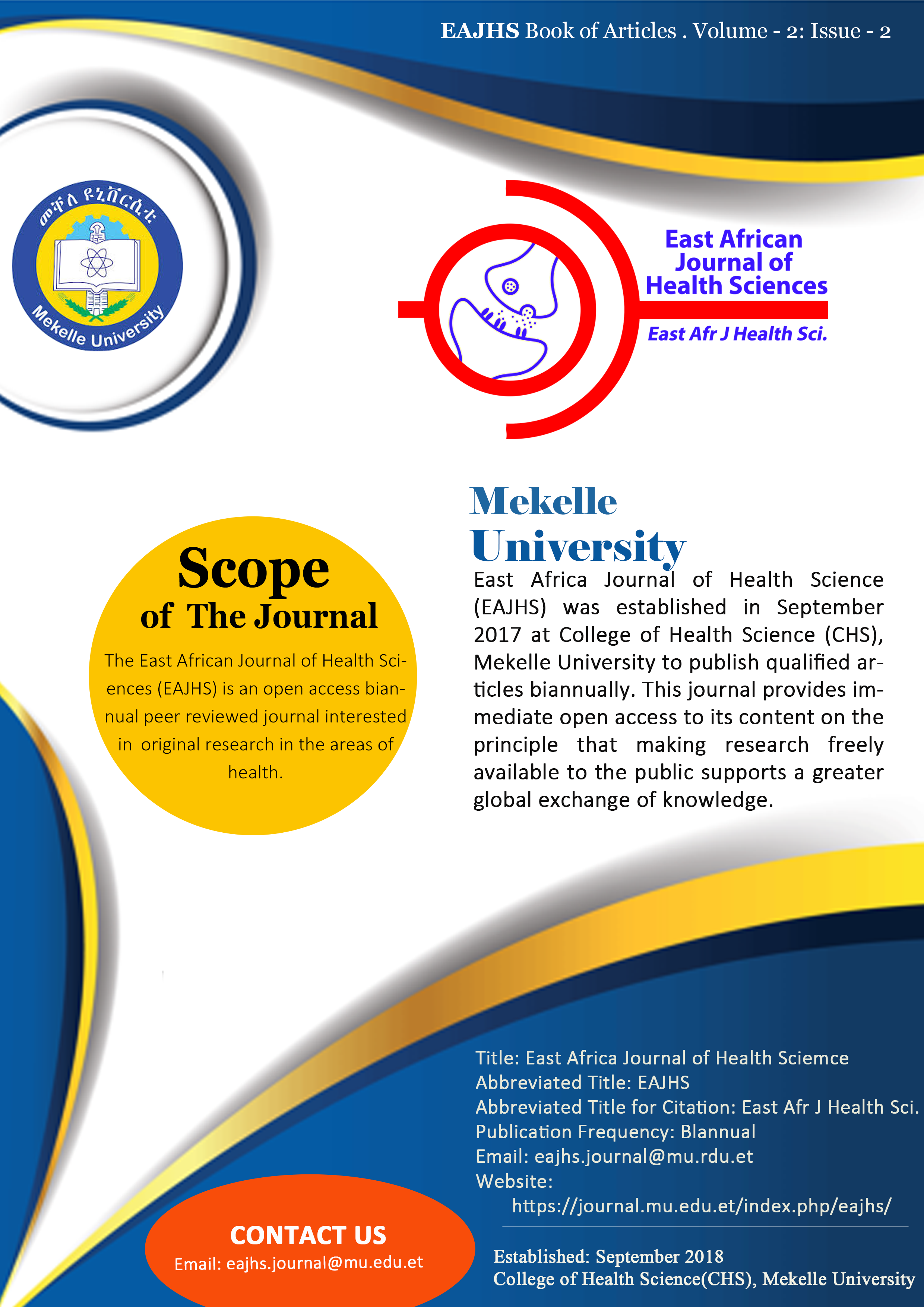Determinants of age appropriate breastfeeding practices among 6 – 23 months old children from rural and urban communities of Tigray, northern Ethiopia
DOI:
https://doi.org/10.71624/de5t8f19Keywords:
age appropriate, children, breastfeeding practices, TigrayAbstract
Background: Numerous studies have reported the determinants of low levels of initiation of breastfeeding within an hour after birth, exclusive breastfeeding for the first six monthsor continue breastfeeding practices for two years and beyond. However, few have examined the composite age appropriate breastfeeding practices of women from resource limited settings.
Objective: The aim of this study was to assess infant and young child feeding practices and their determinants in rural and urban communities of Tigray region of Ethiopia.
Methods: A cross-sectional study was conducted in randomly selected households from all districts of Tigray, Ethiopia from June through July 2019. A structured questionnaire on practices of infant and young child feeding practices was used to collect information from 5321 mothers of 6-23 months old children. Bivariate and multivariable analyses were conducted. Variables having p value less than 0.20 at bivariate analysis were fitted to multivariable binary logistic regression model and 95% Confidence interval with p-value<0.05 was used to assess the strength of association.
Results: Breastfeeding was almost universal. About 98.8% of the mothers practiced ever breastfeeding, 96.5% provided colostrum and 85% of the mothers initiated breastfeeding within one hour of birth. Almost all of the mothers (98.0%) avoid prelacteal feeding, 96.5% reported that they exclusively breastfed their infants and 75.2% of the mothers practiced continued breastfeeding until two years. The prevalence of age appropriate breastfeeding was 53.9%.Mothers who were educated were more likely (AOR= 1.35) to practice age appropriate breastfeeding as compared to mothers with no education. Mothers who were single were less likely (AOR=0.58) to practiceage appropriate breastfeedingcompared to married and mothers who provided prelacteal feeds were less likely (AOR=0.14) to practice age appropriate breastfeeding. Mothers who were from food secure households were less likely (AOR=0.69) to practice ageappropriate breastfeeding as compared to mothers from food insecure households. Mother whose children had fever in the last two weeks of the survey were less likely (AOR=0.81) to practice age appropriate breastfeeding. Children aged 12-23 months were less likely (AOR=0.72) to receive age appropriate breastfeeding compared to younger children. Mothers who gave colostrum as first food for their infants were more likely (AOR=3.74) to practiceage appropriate breastfeeding.
Conclusion: Age appropriate breastfeeding practices was relatively better. A significant number of mothers practiced timely initiation of breastfeeding within an hour of birth, exclusive breastfeeding for the first six months and continue breastfeeding until 24 months or more. Sustaining and strengthening the high-performing breastfeeding ecosystem is recommended to guarantee the continuation of the age appropriate breastfeeding practices as well as their performance during and after the armed conflict and siege imposed on Tigray, Ethiopia.
Downloads
Published
Issue
Section
Categories
License
Copyright (c) 2024 The Author(s)

This work is licensed under a Creative Commons Attribution 4.0 International License.
This journal and its articles are licensed under the Creative Commons Attribution 4.0 International License (CC BY 4.0).


